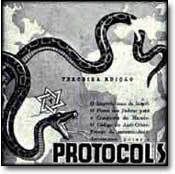Dr. Christopher Bolan
International negotiations with Iran over its nuclear
program have resumed this week in Kazakhstan.
Initial reporting suggests that Iran will be offered some limited
sanctions relief in return for restrictions on Iran’s nuclear enrichment
activities. However, these talks have a
troubled history and experienced observers are quick to tamp down any
expectations of a major breakthrough. As
any number of foreign policy pundits will be debating the significance of these
outcomes over the next several days, it would be prudent to dispel some of the
most popular (and misguided) myths surrounding the Iran policy debate.
Myth 1: Iran is an irrational actor. This myth is especially popular among those
pushing the case for immediate military action to attack Iran’s nuclear
infrastructure. Their argument is that
Iranian leaders are crazed, hot-headed, and messianic actors who do not respond
to logic or reason and therefore cannot be trusted with such destructive
weapons. These claims are based on
cultural ignorance and prejudices that would be routinely dismissed as out of
bounds in just about any context outside of US policy debates on Iran. Fortunately, senior US and Israeli officials
have publicly dismissed this myth as false.
America’s senior military officer, the Chairman of the Joint Chiefs of
Staff General Dempsey asserted in a television interview that “we
are of the opinion that the [Iranian] regime is a rational actor.” Israel’s retired Mossad director Meir Dagan
similarly opined that “the
regime in Iran is a very rational one.”
Moreover, Ehud Barak, Israel’s Defense Minister, elaborated on this
basic point saying that “I
don’t think the Iranians, even if they got the bomb, [would] drop it in the
neighborhood…They are radical but not totally crazy…They have a quite
sophisticated decision-making process, and they understand reality.”
Myth 2: Iran has vowed to wipe Israel off the
map. Israeli Deputy Prime
Minister Meridor has admitted that President Ahmadinejad “didn’t say ‘we’ll
wipe it [Israel] out.’” The more
accurate translation according to Middle East expert Juan Cole is that Ahmadinejad
was instead quoting Ayatollah Khomeini who said that “this
Occupation regime over Jerusalem must vanish from the page of time.” This
then is roughly the rhetorical equivalent of Trotsky’s condemnation of the
Bolsheviks to the “dustbin of history” and Ronald Reagan’s reprisal of this
phrase anticipating that “freedom and democracy will leave Marxism and Leninism
on the ash heap of history.” Now to be
clear, Ahmadinejad has said plenty of vial, disgusting, reprehensive, and
idiotic things. But making a direct
threat to militarily destroy Israel is not among them. In fact, both Ahmadinejad and Iranian Supreme
Leader Khamenei subsequently sought to reassure the international community
that “there won’t be any war in the future” and that “the Islamic Republic has
never threatened and will never threaten any country.”
Myth 3: Iran is an existential threat to Israel. This is a claim routinely accepted at face
value in American political circles, but is vigorously debated in Israel. Israel is widely assessed to have several
hundred nuclear bombs with the capability to deliver them anywhere in the
region and is demonstrably the region’s strongest and most capable
military. Admitting to this basic
reality, Ephraim Halevy, former Mossad Director, noted that “I think Israel is
strong enough to protect itself, to take care of itself. I think ultimately it is not in the power of
Iran to destroy the state of Israel.”
Similarly, Dan Halutz, former Israeli Defense Forces Chief of Staff,
concludes that “Iran
poses a serious threat but not an existential one.”
Myth 4: Iran is in violation of the
Non-Proliferation Treaty (NPT).
The latest formal International
Atomic Energy Agency (IAEA) report on Iran never uses the word ‘violate’ in
assessing Iran’s compliance with the NPT.
In fact, this recent report explains specifically that “the Agency
continues to verify the non-diversion of declared material.” In other
words, there is absolutely no evidence that Iran is diverting enriched uranium
for a weapons program. Moreover,
Iran repeatedly reminds international audiences that as signatory to the NPT
(unlike other nuclear-armed countries with which US has managed to establish
effective relationships such as Israel, India, and to a much more questionable
degree with Pakistan), Article IV grants Tehran “the inalienable right… to
develop research, production and use of nuclear energy for peaceful purposes without
discrimination.” To be sure, Iran’s
failures to provide full transparency justifiably concern US leaders, render
the IAEA “unable to provide credible assurance about the absence of undeclared
nuclear material,” and have provided the basis for UN Security Council
Resolutions sanctioning Iran. However,
it is precisely the extent of cooperation required of Iran that has been and will
continue to be the focus of ongoing negotiations with the IAEA & P5+1. Nonetheless, Iran is absolutely entitled to
enrich uranium for civilian purposes and there is no evidence that current
Iranian nuclear activities constitute a formal breech of its basic obligations
under the NPT.
Myth 5: Iranian civilian
nuclear activities are a cover for nuclear weapons development. This charge has been repeatedly dismissed by
the best available US intelligence assessments.
The 2007 US National Intelligence Estimate assessed that Iran suspended
its nuclear weapons program in 2003.
Secretary of Defense Panetta confirmed the continued validity of this
assessment in February 2013 saying that “the intelligence we have is they
[Iranian leaders] have not
made the decision to proceed with the development of a nuclear weapon.” Instead, the ultimate objective for Iran’s
civilian nuclear program, according to US Director of National Intelligence
James Clapper, may be to develop “various nuclear
capabilities that better position it to produce such weapons, should it choose
to do so.” He went on, however, to
emphasize that “we do not know…if
Iran will eventually decide to build nuclear weapons.” In other words, Iran like many other countries
may be seeking a latent nuclear weapons capability or pursuing what is referred
to as the ‘Japan option’ – the ability to produce a nuclear weapon on a
relatively compressed timeline should the security situation warrant a nuclear
deterrent. Of course, constant US and
Israeli threats to attack Iran’s existing civilian nuclear facilities are
counterproductive and underscore the potential need for just such a deterrent. Finally, Iran’s Supreme Leader Ayatollah
Khamenei has formally and publicly renounced nuclear weapons in a fatwa
that “considers the possession of nuclear weapons a grave sin.” Reversing such a pledge is, of course, not
impossible. However, all available evidence (see above) confirms that Khamenei
has thus far made good on his pledge to “never pursue nuclear weapons.”
Myth 6: Iran has sufficient nuclear fuel to make
a bomb. This claim has been
advanced by sloppy analysts and others interested in hyping the Iranian
threat. However, there is no evidence
that Iran has any weapons-grade fissile material (see Myth 4 above regarding
the IAEA confirmations that there is no evidence that Tehran is diverting enriched
uranium). All evidence suggests that
Iran is producing low enriched uranium at roughly the 5% and 20% levels (for
energy production & medical treatments), but not to the 90% level required
for weapons-grade fissile material.
Moreover, while Iran is openly increasing its capacity to produce more
of this low enriched uranium, the IAEA just this month noted that Iran is simultaneously
reducing
its nuclear stockpiles thereby reducing nonproliferation concerns.
Myth 7: A
nuclear-armed Iran will lead to regional proliferation. Recent analysis by the Center
for New American Security dismisses “conventional wisdom that Iranian
nuclearization will spark region-wide proliferation” and concludes that
“neither Egypt nor Turkey, [nor Saudi Arabia] is likely to respond…by pursuing
the bomb.” A recent study from the War
Studies Department of King’s College London draws similar conclusions noting
that Turkey, Egypt and Saudi Arabia “have
little to gain and much to lose by embarking down such a route.” Moreover, there is ample historical evidence
both inside and outside the Middle East that one nation’s possession of nuclear
weapons does not necessarily lead to further proliferation. China conducted its first nuclear tests in
1964 and yet nearly 50 years later neither Japan nor South Korea have opted to
‘go-nuclear’. Ironically, the most
powerful incentive for nuclear proliferation among Arab nations has been
Israel’s undeclared nuclear weapons capability since the late 1960’s. And yet, despite several Arab-Israeli wars
this has not yet been sufficient incentive to spur further regional
proliferation.
Myth 8: A nuclear-armed Iran will destabilize
the region. A prominent American
international relations scholar Kenneth Waltz in a Foreign Affairs article last summer
makes precisely the opposite argument.
He makes the case that the preponderance of historical evidence suggests
that nuclear weapons have been a stabilizing influence on international
politics imposing a tremendous degree of rationality and caution on the part of
nuclear powers. Most Obvious Case in
Point: The US-USSR nuclear arsenals
contributed to what diplomatic historian John Lewis Gaddis dubbed ‘The
Long Peace’ marked by the absence of violent conflict between the
major powers. Indeed since the advent of
nuclear weapons there has not been a single major armed confrontation between
any of the nuclear powers. The same
logic would likely apply to Israel and Iran (see myth #1).
Myth 9: Iran is on the brink of producing a nuclear
weapon. US, Israeli, and other
western intelligence agencies have falsely been predicting an imminent Iranian
nuclear bomb since 1979. A Christian
Science Monitor article details the history of these errant assessments:
“Breathless predictions that the Islamic Republic will soon
be at the brink of nuclear capability, or – worse – acquire an actual nuclear
bomb, are not new. For more than a
quarter of a century Western officials have claimed repeatedly that Iran is
close to joining the nuclear club. Such
a result is always declared ‘unacceptable’ and a possible reason for military
action, with ‘all options on the table’ to prevent upsetting the Mideast
strategic balance dominated by the US and Israel. And yet, those predictions have time and
again come and gone.”
The failure to uncover any militarily significant quantities
of WMD after the invasion of Iraq in 2003 should only add to one’s skepticism
about similar claims regarding Iran.
Myth 10: The global non-proliferation regime is
on the brink of collapse. In
fact, by any reasonable historic measure, international non-proliferation
efforts have been wildly successful. In
his third presidential debate with Nixon in 1960, John F. Kennedy predicted that
“10, 15, or 20 nations will have a nuclear capacity….by the end of the
Presidential office in 1964.” Yet despite
this alarming prediction, only 9 nations currently possess a nuclear weapons
arsenal (Britain, China, France, Russia, & US; plus Israel, Pakistan,
India, and North Korea). Not a perfect
record over the span of more than 50 years, but a substantial record of
accomplishment nonetheless.
The author is a
professor of national security studies at The U.S. Army War College. The views expressed are his own and do not
necessarily reflect those of the U.S. Government or the Department of Defense.
Tuesday, 26 February 2013
Top Ten Myths About Iran
Posted @
17:12
![]()
Subscribe to:
Post Comments (Atom)
![[9_10_s22.jpg]](https://blogger.googleusercontent.com/img/b/R29vZ2xl/AVvXsEjTXnQay9wzz0E6nVHrVhaHKoq_zYXDqZjijHlNDQzj90MZzInrCuVX4ciFYCiBfZ7lhlgr2bBhhnl7ddWbhdih5JbXjQYbA605TNyiq046bQqjG2A4S-nHTmh1VBTQSG6tmc23wq47QQ/s1600/9_10_s22.jpg)




No comments:
Post a Comment